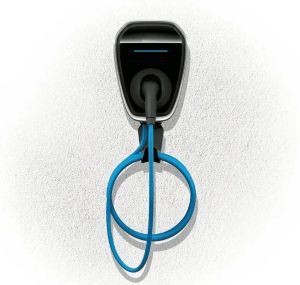


Why You Usually Can’t Install a DC Fast Charger at Home
Why You Can’t Install a DC Fast Charger at Home — And What to Use Instead
As electric vehicles (EVs) become more popular, many owners want to charge their cars quickly at home. The idea of a DC fast charger, which can recharge an EV in under an hour, sounds appealing. However, the reality is that installing a DC fast charger at home is usually not feasible. Here’s why—and what the best home charging alternatives are.
EV charging comes in three main levels:
Level 1 (120V AC):
This uses a standard household outlet—like the ones you use for lamps or appliances. It’s easy to use but very slow, providing only about 3–5 miles of driving range per hour of charging. Level 1 is best for drivers who don’t travel far daily and can leave their car plugged in for many hours or overnight.
Level 2 (240V AC):
This requires a dedicated 240-volt outlet, similar to what powers large home appliances like dryers. Level 2 chargers typically add 25–30 miles of range per hour, making it possible to fully charge most EVs overnight (4–10 hours). Installation needs a licensed electrician but offers an excellent balance of speed, convenience, and cost. This is the most common and practical home charging solution today.
Level 3 (DC Fast Charging):
Also called DC fast charging or rapid charging, this uses direct current at very high voltages (typically 480V or more) and can recharge an EV battery up to 80% in 20 to 30 minutes. While this speed is impressive, Level 3 chargers are large, expensive, and designed for commercial use like public stations or fleet depots.
Power Requirements: DC fast chargers demand enormous amounts of electricity—often tens or hundreds of kilowatts—far beyond what a typical home’s electrical system can provide. Most homes use around 1 to 2 kilowatts on average, so upgrading to handle DC fast charging would require major electrical infrastructure changes.
Cost: The equipment itself can cost $10,000 to over $50,000, excluding installation, utility upgrades, permits, and inspections. These costs are prohibitive for most residential users.
Installation Complexity: Level 3 chargers need three-phase power (rare in residential neighborhoods), dedicated transformers, and special safety measures. Obtaining permits and passing inspections add to the complexity.
Safety and Regulations: High-voltage DC charging has significant safety considerations, which are why it’s typically limited to commercial or industrial locations with trained personnel.
For home use, Level 2 chargers are the sweet spot. They offer:
Reasonable speed: Enough to fully charge overnight, meeting daily driving needs without hassle.
Affordability: Chargers typically cost between $500 and $2,000, with installation around $1,000 to $2,000.
Compatibility: Most EVs support Level 2 charging, and many come with compatible chargers.
Convenience: Plug in your car at home, and it charges safely and efficiently without massive power upgrades.
Many utility companies even offer rebates or incentives to help offset installation costs, making Level 2 chargers even more attractive.
There are some portable DC fast chargers or battery-based systems available, but they have major limitations:
Very high cost
Limited battery capacity that requires long recharge times
Lower efficiency compared to grid-powered chargers
These are mostly for emergency use, not daily charging.
In the future, technological advances such as improved battery tech, grid modernization, and home solar-plus-storage systems could make home DC fast charging more realistic. For now, though, the barriers of cost, infrastructure, and safety keep DC fast chargers out of most garages.
In summary: While you can’t install a DC fast charger at home today, a properly installed Level 2 charger provides fast, reliable, and affordable EV charging that meets the needs of most drivers—right from the comfort of your garage.Know more about Google SEO Directory
